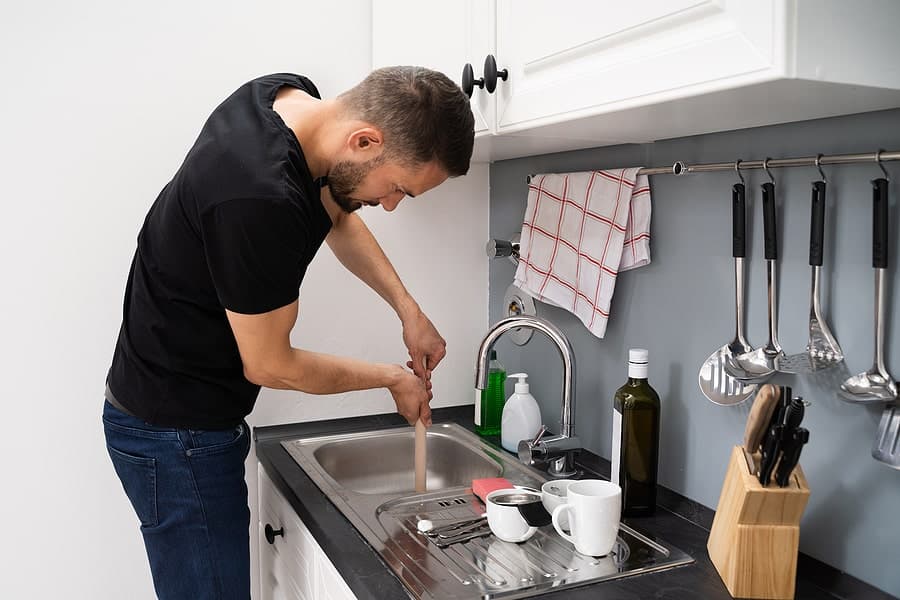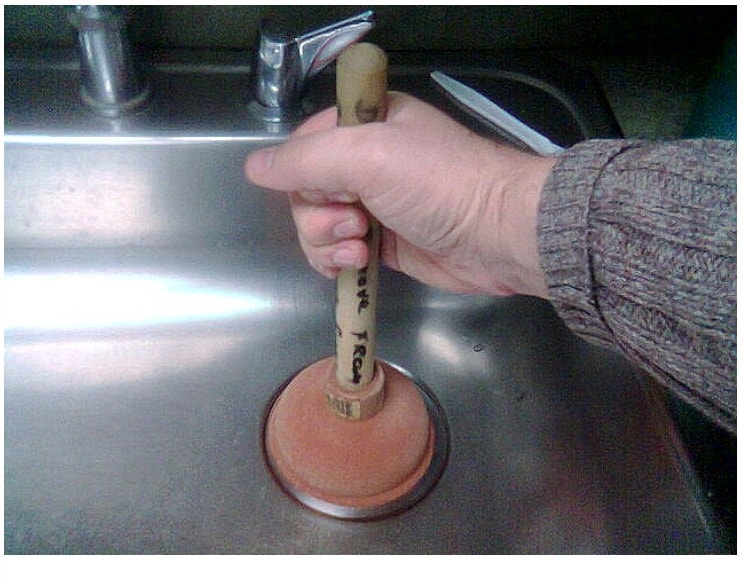Just how do you feel about Five Ways to Fix a Slow Sink Drain?

It's not typical for your kitchen sink to block multiple times in one month. If your sink blocks two times a week, there's some trouble taking place.
A blocked kitchen area drainpipe doesn't simply decrease your jobs, it deteriorates your whole plumbing system, bit by bit. Below are some common practices that urge sink obstructions, and also exactly how to avoid them.
You require proper garbage disposal
Reusing waste is wonderful, but do you focus on your organic waste also? Your kitchen area should have two separate waste boxes; one for recyclable plastics and one more for organic waste, which can come to be compost.
Having actually a designated trash can will help you and also your household avoid tossing pasta and various other food residues down the tubes. Generally, these residues absorb wetness and become obstructions.
The fault isn't from your cooking area sink in any way
Maybe the issue isn't from your kitchen sink, yet the entire water drainage system. In such a situation, you may discover that other sinks as well as drains obtain blocked every other week. You require an expert plumbing service to repair this.
You're tossing coffee down the drain
Made use of coffee grounds as well as coffee beans still absorb a substantial amount of dampness. They might seem small enough to throw down the drainpipe, but as time takes place they begin to swell and also use up more area.
Your coffee premises ought to enter into natural garbage disposal. Whatever fraction escapes (maybe while you're washing up) will be cared for during your month-to-month clean-up.
You have actually been consuming a lot of oily foods
Your cooking area sink might still get obstructed even with natural garbage disposal. This may be since you have a diet abundant in greasy foods like cheeseburgers.
This oil coats the insides of pipelines, making them narrower as well as even more clog-prone.
Use a bettor
Your pipe had not been fixed appropriately to begin with
If you've been doing none of the above, yet still get routine blockages in your cooking area sink, you ought to call a plumber. There could be a problem with how your pipelines were installed.
While your plumber shows up, check for any leakages or abnormalities around your kitchen pipelines. Don't try to deal with the pipes on your own. This might create a mishap or a cooking area flooding.
Somebody tried to clean their hair in the cooking area sink
There's a right time and also place for everything. The kitchen sink is just not the ideal place to clean your hair. Washing your hair in the kitchen area sink will certainly make it clog one way or another unless you utilize a drainpipe catcher.
While a drainpipe catcher might catch a lot of the fallouts, some strands might still get through. If you have thick hair, this may suffice to reduce your drainage as well as eventually form a blockage.
There's even more dust than your pipelines can handle
If you get fruits straight from a ranch, you may discover even more cooking area dirt than other people that go shopping from a mall. You can quickly repair this by cleansing the fruits and veggies properly before bringing them into your home.You require correct waste disposal
5 Things to Do if You Want to Unclog Your Kitchen Sink
Trick 1: Don’t Put Vegetable Peelings Down Disposal
Although the garbage disposal is a powerful and useful way to get rid of food waste, it is not meant for certain vegetables. Don’t put potato, carrot or celery peelings down the disposal. These veggies are fibrous or contain a lot of starch which can jam the disposal motor and clog your sink drain-piping every time. There are other food items that occasionally will clog your sink. If this happens, follow the next four tips.
Trick 2: Use Your Plunger
Plunger is a must-have tool for every household because it can be used to unclog any drain in any part of the house including the kitchen. Yes, the simple plunger can unclog your kitchen sink too. When you use the plunger, plug the other holes in you kitchen sink with a rag cloth. Also, ensure that the plunger cup completely covers the clogged kitchen sink hole. Now, keep the plunger in an upright position and plunge about ten times vigorously. This should remove any vegetable peels, food leftovers or any other solids in the kitchen sink.
Trick 3: Clear the P-trap
The P-trap is the pipe below your sink that’s shaped like the letter P (on its side). You should be able to spot it when you look in the cabinet below your sink. This pipe, shaped to provide a seal against sewer odors, gets clogged when receiving larger solid objects. To unclog the P-trap, you need a pair of gloves and a bucket. You should unscrew the large nut on both the sides of the trap with your bare hands and remove the pipe. Make sure you place a bucket right below the trap to collect all the unclogged water. You can also run your hands through the pipe to remove any solid objects.
Trick 4: Use a Metal Wire
Sometimes using a metal wire to push down or pull up debris from your drain can help unclog your kitchen sink. If you don’t have a metal wire, unbend a wire hanger and use it in the kitchen drain hole. Since this is time-consuming, you’d only use this trick as a last resort. It works well when you know what’s inside the drain.
Trick 5: Use a Drain Snake
Go to your local hardware store and buy a short manual-crank drain snake. This tool is fairly inexpensive and works well unless the clog is further down the drain, past the P-trap.
If none of the above tricks work, then you should call an expert right away, especially since clogged drains are the perfect breeding ground for all kinds of bacteria and viruses.
https://www.iveyengineering.com/things-to-do-unclog-kitchen-sink/

Do you appreciate reading up on What To Do When Your Kitchen Sink Won’t Drain? Leave feedback directly below. We would be interested to find out your thinking about this post. In hopes that you come back again soon. I beg you take a moment to promote this article if you enjoyed it. Thanks a lot for your time invested reading it.
Click For More Information
 Jurnee Smollett Then & Now!
Jurnee Smollett Then & Now! Burke Ramsey Then & Now!
Burke Ramsey Then & Now! Lacey Chabert Then & Now!
Lacey Chabert Then & Now! Pierce Brosnan Then & Now!
Pierce Brosnan Then & Now! Ricky Schroder Then & Now!
Ricky Schroder Then & Now!